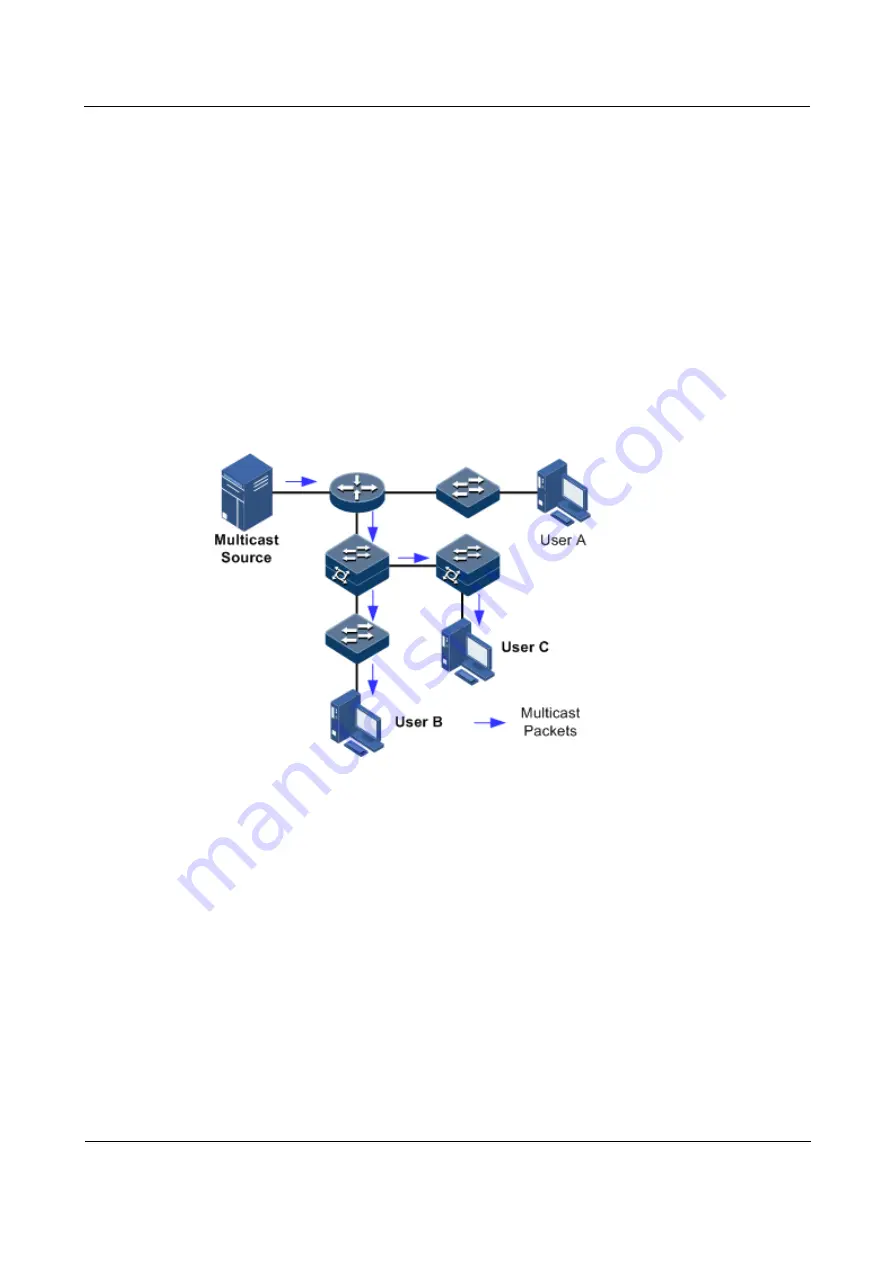
Raisecom
ISCOM2600G-HI (A) Series Configuration Guide
8 Multicast
Raisecom Proprietary and Confidential
Copyright © Raisecom Technology Co., Ltd.
322
Broadcast: the system sends information to all users regardless of whether they need or
not, so any user will receive it. Through broadcast, the information source delivers
information to all users in the segment, which fails to guarantee information security and
paid service. In addition, when the number of users who require this kind of information
decreases, the utilization of network resources will be very low, and the bandwidth will
be wasted seriously.
Multicast: when some users in the network need specific information, the sender only
sends one piece of information, then the transmitted information can be reproduced and
distributed in fork junction as far as possible.
As shown in Figure 8-1, assume that User B and User C need information, you can use
multicast transmission to combine User B and User C to a receiver set, then the information
source just needs to send one piece of information. Each switch on the network will establish
their multicast forwarding table according to IGMP packets, and finally transmits the
information to the actual receiver User B and User C.
Figure 8-1
Multicast transmission networking
In summary, the unicast is for a network with sparse users and broadcast is for a network with
dense users. When the number of users in the network is uncertain, unicast and broadcast will
present low efficiency. When the number of users are doubled and redoubled, the multicast
mode does not need to increase backbone bandwidth, but sends information to the user in
need. These advantages of multicast make itself become a hotspot in study of the current
network technology.
Advantages and application of multicast
Compared with unicast and broadcast, multicast has the following advantages:
Improve efficiency: reduce network traffic, relieve server and CPU load.
Optimize performance: reduce redundant traffic and guarantee information security.
Support distributed applications: solve the problem of point-point data transmission.
The multicast technology is used in the following aspects:
Multimedia and streaming media, such as, network television, network radio, and
realtime video/audio conferencing






























